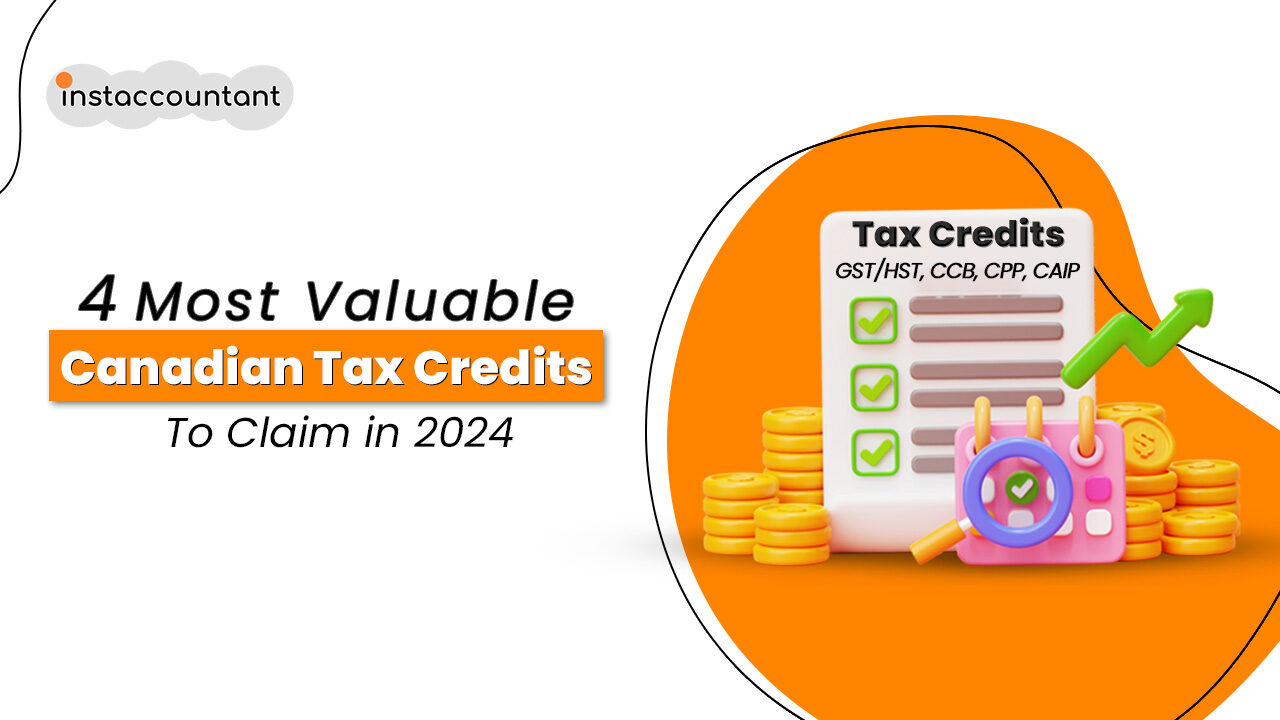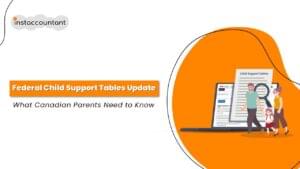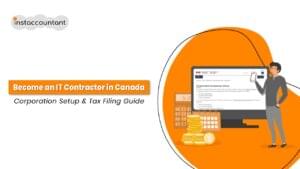Tax credits in Canada can act like financial discounts that significantly reduce your tax bill. They come in various forms and provide valuable financial support. As an accountant, I’ve seen how these credits can impact individuals and families. Staying informed about the available tax credits and understanding how to leverage them can optimize your tax savings.
Here are four Canadian tax credits you should consider claiming for 2025, including updates on eligibility and amounts for the upcoming year.
Difference Between Tax Credit and Tax Deduction
If you want to save money on your taxes, you need to understand the difference between deductions and credits. These are two ways that the Canadian government rewards you for certain actions or situations, but they work in different ways.
Tax Deduction: amount that you can subtract from your total income before calculating your tax. This lowers your taxable income and reduces the amount of tax you have to pay. For example, if you are self-employed, you can deduct some of your business expenses from your income.
Tax Credit: amount that you can subtract from your tax after calculating it based on your taxable income. This lowers your tax payable and increases your refund or decreases your balance owing. For example, if you donate to a charity, you can claim a credit for a percentage of your donation.
However, not all credits are the same. Some are non-refundable, which means they can only reduce your tax to zero, but not below it. Some are refundable, which means they can give you a refund even if your tax is zero or negative. For example, the GST/HST credit is a refundable credit that gives you money back based on your income and family situation.
How to Claim GST/HST Credit
The GST/HST Credit is a tax-free quarterly payment issued to residents of Canada who have low to modest income. It is designed to offset the cost of the goods and services tax (GST) or harmonized sales tax (HST) that you pay on your purchases.
Eligibility Criteria: To be eligible for the GST/HST credit, you must be a resident of Canada who is 19 years of age or older. If you’re younger but married or have dependent children, you may still qualify. The income threshold for eligibility is $42,335 for individuals and families. However, you may still qualify with income up to $65,000, depending on your marital status and the number of children you have.
Amount: The GST HST credit is calculated by adding $325 for each adult and $171 for each child under 19. If you are a single parent or your household income is over $10,544, you may qualify for an additional credit of up to $171. Imagine you have a family of four, you could potentially be eligible for a credit of up to $1,163.
Distribution: The GST/HST credit is distributed in quarterly installments throughout the year. You’ll receive this credit in January, April, July, and October to help you with your financial needs.
How to Apply: To apply for the GST/HST credit, you simply need to file your taxes each year. Even if you don’t have any income to report, you can still receive this refundable tax credit. If you are new to Canada, you can apply for the GST/HST credit before filing your first tax return by using the forms available on the CRA website.
How to Claim Canada Child Benefit (CCB)
The Canada Child Benefit (CCB) is a tax-free monthly payment issued to eligible families to help cover the costs of raising children. It offers substantial support, ensuring children receive the care they need and deserve.
Eligibility Criteria: The Canada child benefit is available to anyone who are mainly in charge of raising children under 18. This can include moms, dads (even in same-sex relationships), grandparents, or anyone taking a prominent role in caring for the child. Just remember, only one person can claim the CCB benefit for each child. Plus, those who have shared custody arrangements or temporary full custody might also be eligible.
Amount: The amount of Canada child benefit you receive is determined by various factor such as the number and ages of your children, your marital status, and your family’s income. Suppose you have children under the age of 6. In that case, you’ll receive $7,437 per child annually. For kids aged between 6 and 17, the benefit amounts to $6,275 per child. It’s important to note that as your family income increases, the CCB is gradually reduced for households earning over $34,863 and rapidly reduced for those earning over $75,537. If your child has a disability, you may qualify for an additional benefit called the Child Disability Benefit (CDB). This benefit provides up to $3,173 per child, offering much-needed financial assistance to help meet the unique needs of your child.
*The reduction rate varies depending on income and can still be gradual in some cases. It’s important to note that these are maximum amounts. The actual CCB amount you receive can be lower depending on your income and whether you receive benefits like the Goods and Services Tax/Harmonized Sales Tax (GST/HST) credit.
Distribution: The Canada child benefit is paid out to parents on a monthly basis throughout the year. If the total amount of your CCB benefit for the entire year is less than $240, you’ll still receive your payment, but it’ll be consolidated into a single payout in July.
How to Apply: You can start getting the Canada child benefit (CCB) from the time your little one is born or if you become the primary caregiver of a child below 18 years of age. In the case of a newborn, you can apply for the CCB when you register the birth with your province or territory. This is the easiest way to apply, and it will ensure that you start receiving payments as soon as possible. If you did not apply during the birth registration process, you still have the opportunity to apply online through the CRA My Account or by mail.
How to Claim Canada Workers Benefit (CWB)
The Canada Workers Benefit (CWB) offers additional financial support to individuals and families with low incomes who are actively employed. By supplementing their income, the CWB aims to encourage and reward work while reducing poverty levels.
Eligibility Criteria: The Canada workers benefit is open to Canadian residents who are at least 19 years old, except for those who are full-time students. To be eligible, you need to have employment income that falls below the specified threshold for your province. If you meet the requirements for both the CWB and the disability tax credit, you may also qualify for a disability supplement.
Amount: The Canada workers benefit offers financial support to individuals and families based on their income and disability status. If you qualify, you can receive up to $1,428 if you’re on your own, or up to $2,461 if you have a family. Plus, if you have a disability, you could get an additional supplement of up to $819. To be eligible for the maximum benefit, singles must earn less than $23,495, and families need to have an income below $26,805. But don’t worry if your income is a bit higher, you may still be eligible for partial benefits if you earn less than $33,015 (individuals) or $43,212 (families).
Distribution: The Canada workers benefit (CWB) is provided as a refundable tax credit that you can receive when you file your income taxes. Once you qualify for the CWB, the Canada Revenue Agency (CRA) will send you advance payments equal to 50% of your benefit. These payments are distributed three times annually in January, July, and October. The remaining portion of your benefit will be paid out at the end of the year when you file your taxes. So, not only can you enjoy the financial support throughout the year, but you can also claim the full benefit later on.
How to Apply: If you want to apply for the Canada workers benefit (CWB) and/or the disability supplement, all you have to fill out Schedule 6 and include it with your tax return submission.
*The income limits mentioned are for residents of most provinces and territories. It’s important to check specific limits for Nunavut, Quebec, and Alberta, as they have different thresholds.
How to Claim Canada Carbon Rebate (CCR)
The Canada Carbon Rebate (formerly known as the Climate action incentive payment (CAIP) is a financial incentive provided to individuals who reside in provinces that have implemented the federal carbon pricing system. It encourages the reduction of greenhouse gas emissions and supports energy-efficient lifestyles. It includes an additional supplement for residents of small and rural communities.
Eligibility Criteria: You can benefit from the Canada Carbon Rebate payment if you live in one of the participating provinces (Alberta, Saskatchewan, Manitoba, Ontario, Prince Edward Island, Newfoundland and Labrador, and Nova Scotia) and you’re 19 years or older. If you live in a small or rural community, you’re in luck! You can receive a 20% supplement through this program if you live outside of a major city. For further details on eligibility, please refer to the CRA website.
Amount: The Climate action incentive payment you receive is determined by your place of residence and the number of children you have. For individuals, the yearly amount varies from $466 to $838. Married couples receive an extra 50% of the base amount, while each child under 19 adds an additional 25%. If you live outside a census metropolitan area, you also receive a supplementary $10. It’s important to note that the Canada Carbon Rebate is a universal tax credit and does not have any income restrictions for eligibility.
Distribution: Climate action incentive payments are issued on a quarterly basis. You can expect to receive your payments in January, April, July, and October.
How to Apply: When you file your Canadian taxes, your application for the Canada Carbon Rebate payment is automatically submitted. Ensure your children are registered for the Canada Child Benefit to receive additional payments.
Final Thoughts
Tax credits in Canada can provide a big boost to your finances and give you some great incentives. As a professional tax accountant, I’m here to help you make the most of these credits. It’s important to understand the rules and how much you might get, so you can make smart choices about using this money to improve your financial situation. Whether your goal is to pay off debts, meet essential expenses, save for the future, or make wise investments, these tax credits can have a significant impact on your overall financial well-being. Don’t miss this chance to save more!




